Galapagos Islands Facts
Congratulations! You've found this blog because you want to learn more about Galapagos. Today, we'll present 14 informative and fun Galapagos Islands Facts. Whether you're cramming for a school biology exam or planning your next vacation, let's discover a new perspective on Galapagos together.
Let's begin with a brief introduction to set the scene. The Galapagos Islands are of course renowned for their unique wildlife, isolated location, and beautiful scenery. Located in the Pacific Ocean, off the coast of Ecuador, the archipelago consists of 19 islands and over 40 smaller islets. These are home to many endemic species, found only in Galapagos, and uniquely evolved here. Today, the Galapagos Islands are a UNESCO world heritage site, as well as a top bucket list destination for tourists.
Now, keep reading to prep up on our 14 fun Galapagos islands facts. We'll cover everything from the origin of the islands, to the unusual creatures that live here, as well as some tall tales about the first human settlers.
SECURE YOUR GALAPAGOS TRAVEL
Get a FREE personalised quote today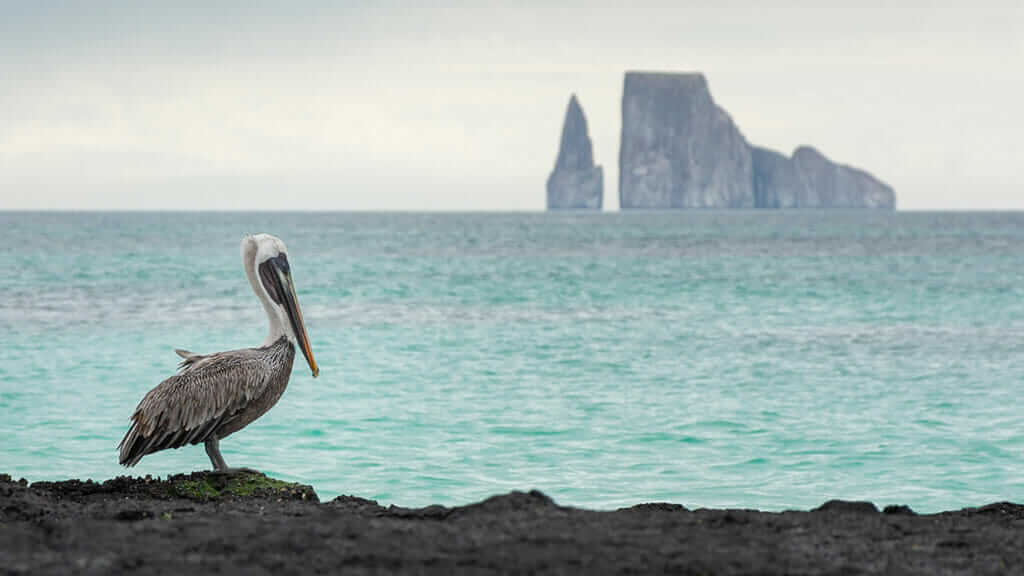
14 Galapagos Islands Facts.
FACT 1: The Galapagos islands appeared from beneath the ocean.
For our first Galapagos Islands Fact let's rewind to the very beginning - where did the islands come from?
The Galapagos archipelago is a group of volcanic islands located in the Pacific Ocean, around 1000 km away from mainland Ecuador. So, yes, we are talking about a very remote place.
However, the islands were not always as visible as they are today. They are in fact underwater volcanoes, formed beneath the ocean some 5 million years ago. Successive eruptions and uplift pushed the volcanoes above the surface of the ocean, forming the islands that we see now.
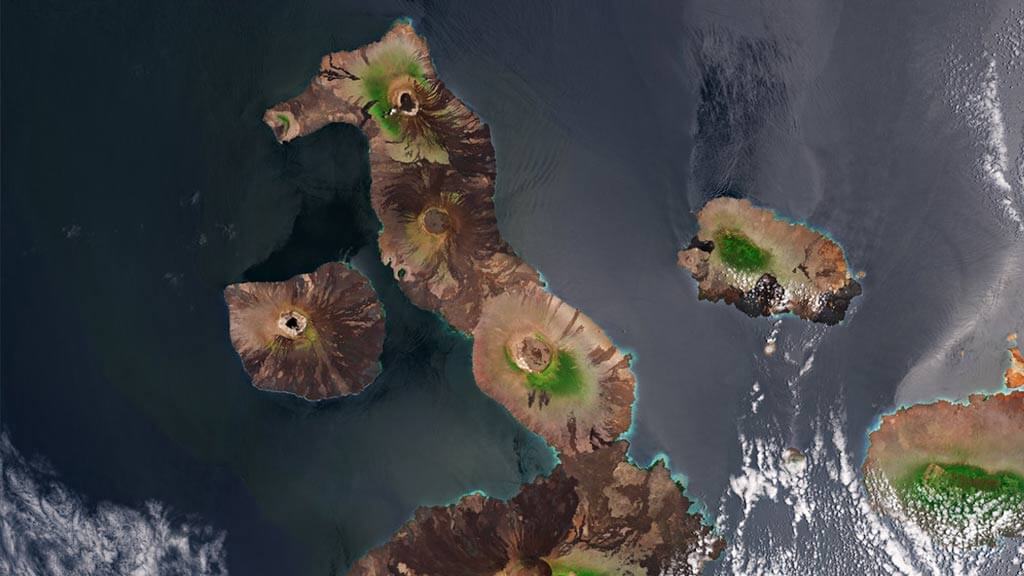
Photo taken from: European Space Agency
But our creation story fact does not end there. The Galapagos Islands are even today in a state of constant change. The Galapagos cycle of life does not just refer to the wildlife here, but also to the islands themselves!
The western islands of Fernandina and Isabela are still forming. Today, they grow and shape-change through frequent volcanic eruptions. Don't forget that Galapagos is located right over an active volcano hot spot. With each new eruption, lava flows extend and push the very boundaries and shapes of these young islands.
To the other extreme, the islands to the east are slowly growing old and dying. These islands, like San Cristobal, were formed over the western hot spot but then drifted eastwards on slow-moving tectonic plates. No longer volcanically active, the process of erosion is causing the islands to decline over time. Eventually, these old islands will submerge once more beneath the ocean, completing their cycle of life.
FACT 2: Galapagos is one of the most volcanically active places on the planet
For Galapagos Islands fact 2, let's continue with the volcanic theme. The Galapagos Islands sit on the Pacific Ring of Fire. This is an area of high seismic and volcanic activity and is home to some of the most active volcanoes in the world.
Lucky visitors are sometimes even able to witness spectacular eruptions from a safe distance, as lava explodes and flows into the ocean. Kean geologists and volcanologists should head to the western islands of Isabela and Fernandina. Here you'll find no fewer than 7 different active volcanoes, as well as breathtaking lunar landscapes. It’s even possible to trek up Sierra Negra volcano to peek inside her huge caldera.

Other interesting volcanic sites to visit on the islands include the highlands of Santa Cruz - home to lava tunnels large enough to walk through. The collapsed lava pits at Los Gemelos Twin Craters are also fun to visit. Santiago island is another great destination, with immense black lava fields as far as the eye can see. Visitors can see both types of Galapagos lava here - A’a, and Pahoehoe.
FACT 3: How did the animals arrive in Galapagos?
From Galapagos Islands fact #1, we already know that the Galapagos Islands emerged from beneath the ocean, and also that they are over 1000km distance away from the continent. So, our next logical question is: how did all the animals get here?
Let's start with Galapagos birds. They could of course fly out to the islands from Ecuador or other South American countries. Perhaps the smaller land birds needed to rest along the way on floating logs or debris. But it's certainly not too much of a leap of faith to see them arriving in one piece.
Marine creatures like sea lions, sea turtles, or sharks would also have enjoyed a relatively easy journey to their new home, swimming at leisure or drifting with ocean currents.
But, what about land animals - Iguanas, giant tortoises, lava lizards, and the like? Remarkably, they are believed to have floated to the Galapagos Islands on plants and foliage.
While at first this explanation might seem rather unlikely, let's delve a bit deeper.
There are powerful rivers on the continent, like the River Guayas that washes out into the Bay of Guayaquil in Ecuador. It's extremely common to observe foliage and debris in the river, especially after heavy rains or flooding. So, it is indeed plausible that land animals could be swept into raging rivers, and carried out to sea.
What would an unlucky animal do in this case? Most likely cling for dear life to any log or plant in the water with them, and wait to see where they eventually end up.
What are the odds of foliage and/or animals drifting 1000km in the precise direction of an archipelago of small volcanic islands? Actually, those odds are higher than one would imagine. Important ocean currents from the north, south, and the mainland happen to push towards and converge at the Galapagos Islands.
So, now we have a perfectly plausible example of how mainland animals could have accidentally migrated to the Galapagos Islands in this way.
Let's move on to Galapagos Islands fact #4, to find out what happened next to these animals. How did they adapt and survive once they arrived at these remote, barren volcanic islands in the middle of the ocean?
FACT 4: The Galapagos gave birth to the famous Theory of Evolution
Why are the Galapagos islands so important? The archipelago was an inspiration for the famous Theory of Evolution. This is one of the most important developments in natural science history.
Young English botanist Charles Darwin visited the islands back in 1835 aboard the Beagle. Darwin collected many scientific specimens of plants and animals during his time here.
While at Galapagos he observed that species such as tortoises, Galapagos Finches, and Mockingbirds had subtly different characteristics on each island that he visited. For example, finches had different beak sizes and shapes. Yet, Darwin firmly believed that each finch he discovered had originally descended from the same common mainland ancestor. This led him to conclude that they must have evolved in unique ways on different islands.
How could this happen? Let's jump back for a moment to Galapagos Fact #3. We know that tortoises arrived at the Galapagos Islands from mainland South America by floating accidentally on ocean currents. In reality, of course, they would have arrived randomly at different individual islands. Why is this important? Because each Galapagos island has its own different ecosystem, habitats, and food sources.
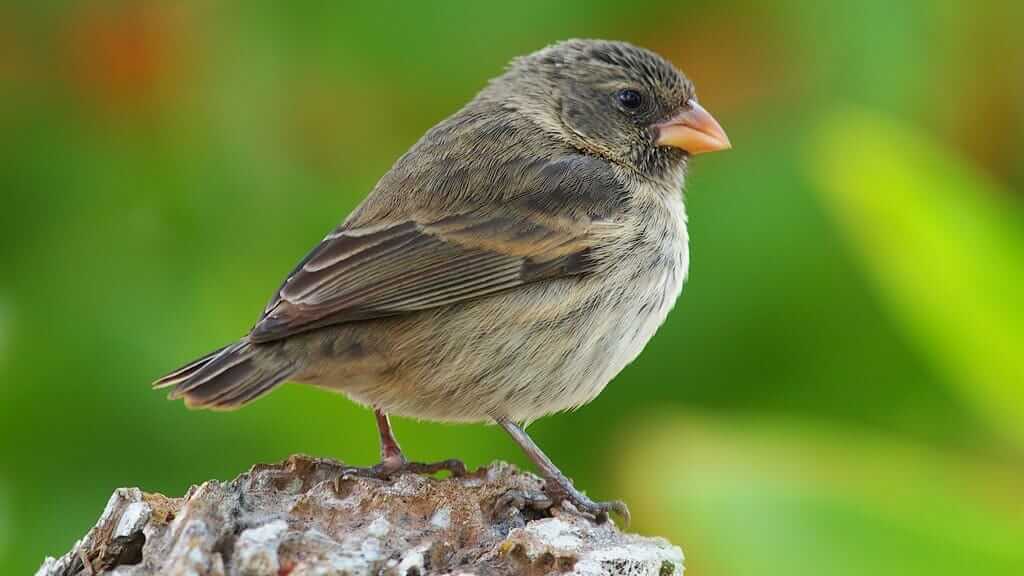
Let's look closer at a real example. Let's say a whole creep (group) of tortoises wash into the same river and are swept out into the Pacific Ocean. They all drift with currents to the Galapagos, BUT they wash up on the shores of different islands.
On Island X the tortoises find only tall shrubs and trees. The best food sources are high off of the ground, not easy for a tortoise to reach. Suppose that one individual tortoise in this population has a unique trait - a long neck and high shell. He can more easily reach the high fruit and leaves, and therefore survives with ease, while his companions have more mixed fortunes. Our lucky individual not only survives, but thrives on Island X, and is able to reproduce with female tortoises. His "long neck / high shell" genes are therefore readily passed on to his offspring, who equally have a superior advantage in the game of survival. Now imagine this process playing out over thousands of tortoise generations. The result is a population of Island X tortoises who have inherited the long neck and high shell trait.
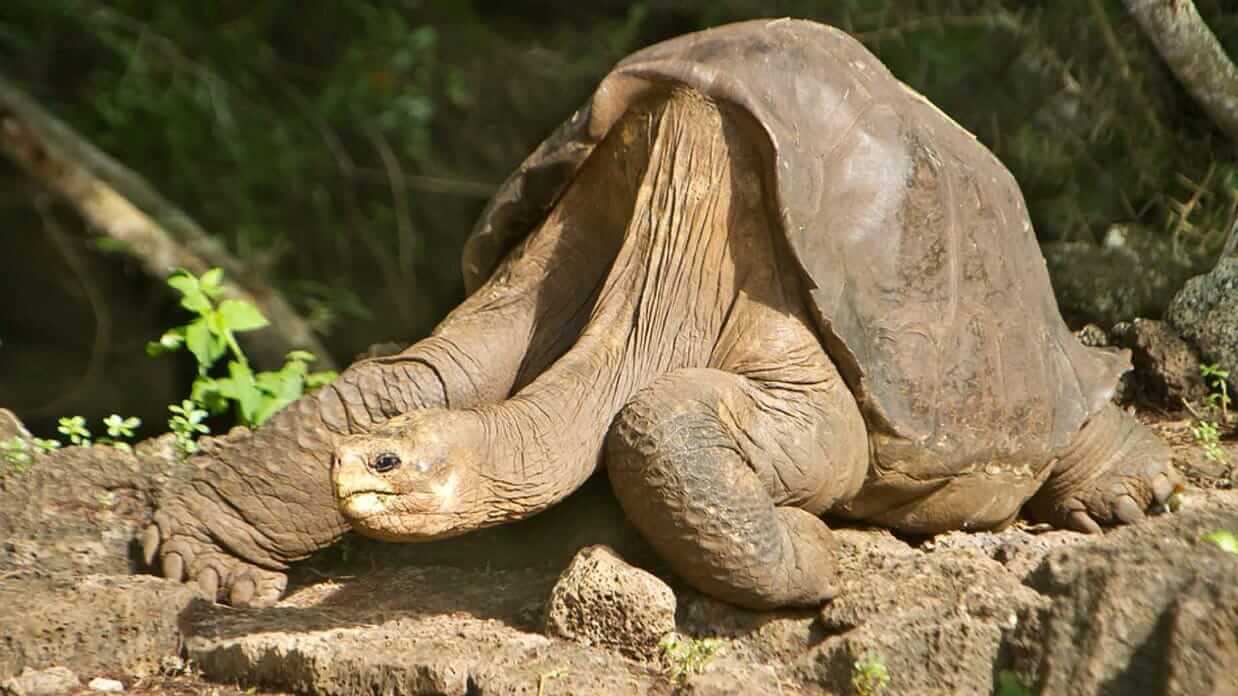
Meanwhile, those who wash up on Island Y have a very different experience. These tortoises struck gold in landing on an island with abundant shrubs and low-lying food. Survival was much easier here, and little evolutionary adaptation was required. The Island Y tortoise population retains its natural dome-shaped shells and short necks.
We now have 2 different subspecies of tortoise, evolved from the very same mainland species. The only difference was that they landed by chance on different nearby islands with distinct ecosystems.
Darwin was the first to record this natural process which he named Natural Selection. That is, advantageous physical traits that favor survival can accentuate themselves in a population over time.

The rest is history. Returning back home to England, Charles Darwin later published his renowned work "On the Origin of Species". Although his theory of evolution was controversial at the time, today it is widely accepted across the globe and is one of the most important developments in the history of natural science. Ultimately the theory would provide evidence that humans originally evolved from apes.
Today, Galapagos tourists can see the very same species that Darwin himself encountered centuries ago. Witnessing the unique evolutionary quirks of finches and tortoises on different islands, one can see living proof of Darwin's theories.
FACT 5: Today the Galapagos Islands are an important National Park
Our next Galapagos islands fact relates to the important topic of conservation.
The Galapagos Islands are a protected National Park and Marine Reserve. Protected status helps keep Galapagos wildlife safe, and preserve habitats for generations to come.
The Galapagos Islands are the second largest marine reserve on the planet (after the Great Barrier Reef). The reserve is home to a host of important endemic creatures, that cannot be found anywhere else on the planet. The impressive biodiversity of the Galapagos Marine Reserve (GMR) has led to recognition by both UNESCO World Natural Heritage and Blue Park Awards.
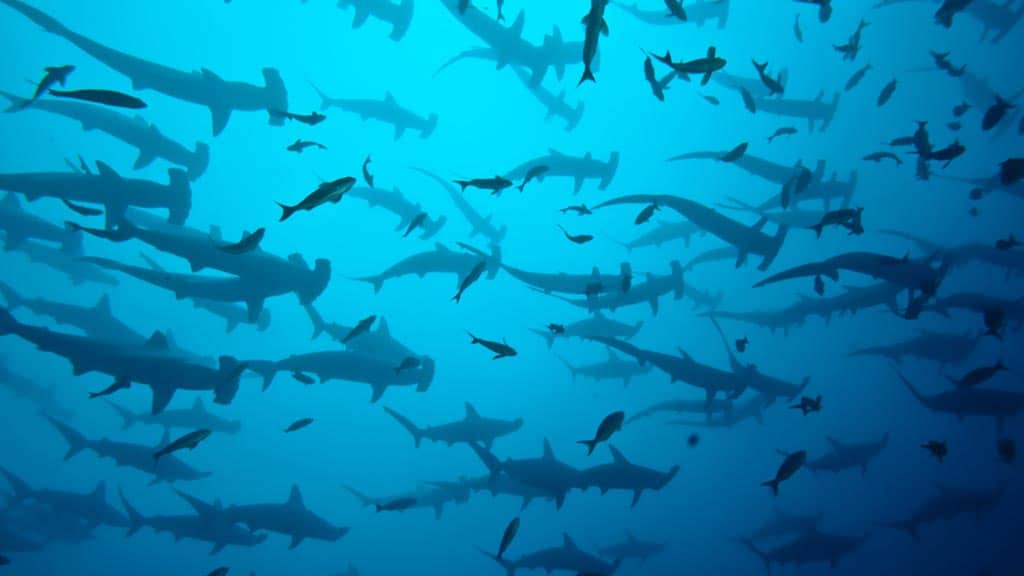
In 2022, at COP26, Ecuador’s president, Guillermo Lasso, shared two important Galapagos conservation developments with the world.
Firstly, the size of the Galapagos Marine Reserve was extended by an extra 60,000 sq km, representing a 45% increase in the protected area.
Secondly, Ecuador has joined forces with neighbors Colombia, Panama, and Costa Rica to combine various isolated marine reserves (including the Galapagos) into one huge ‘Mega-Marine Protected Area’. This creates a safe corridor for migratory species, such as turtles, whales, and sharks.
FACT 6: Galapagos animals have no fear of humans
We could easily list hundreds of facts about the Galapagos island's animals, but perhaps the most curious of all is that they have no fear of humans.
This is what makes a visit to Galapagos so special for wildlife lovers. Tourists are able to observe sea lions, giant tortoises, marine iguanas, penguins, and much more in close proximity.
One almost feels accepted as part of the colony, as birds and animals perform their daily lives while we watch from just meters away.
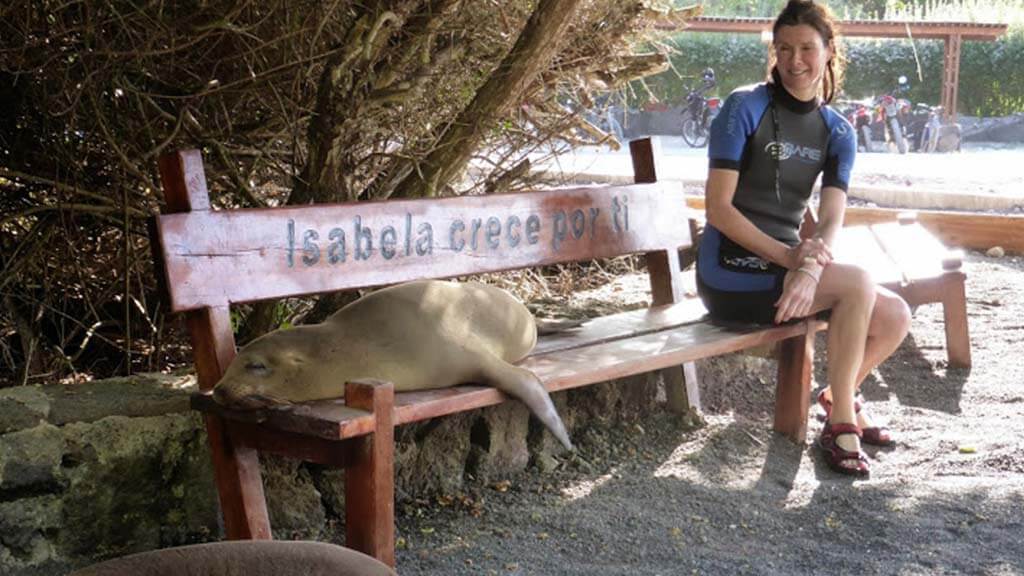
But, why do Galapagos island's animals show no fear?
It all comes down to the fact that the islands are so remote and isolated. Historically Galapagos animals have had little or no exposure to humans. Tomas de Berlanga was the first human to set foot on the islands back in 1535. It wasn't until the 1800s that a few brave souls settled to live on Galapagos. So Galapagos animals had already evolved for thousands upon thousands of generations without human contact. As a result, they never developed a fear of us.
Another reason is that there are few natural land predators on the islands. So animals have always been accustomed to going about their lives safe from harm.
FACT 7: Galapagos giant tortoises can live for over a century
It's now time to meet some of the more iconic and interesting Galapagos wildlife. Our next Galapagos Islands facts will cover some of the amazing birds and animals that live here.
The Galapagos Islands are home to one of the longest-living animals in the world - the Galapagos giant tortoise. In the wild, they often live past 100 years, and in captivity for up to 170 years. Their age can be estimated by counting the rings of a shell scute.
These gentle giants have evolved from mainland species, and grown to huge sizes due to isolation. This is a process known as gigantism, whereby animals can live far longer and grow larger than usual due to lack of predation, abundance of food, and an unstressful life. Large adult tortoises can grow to almost 2 meters in length, and up to a mammoth 400kg in weight.

In some ways, we're lucky to still find living Galapagos tortoises today. Back in the 1800s they were taken aboard ships by pirates and whalers to restock food supplies during long voyages. Even Charles Darwin himself captured 30 live tortoises for food and took 4 baby tortoises home as pets.
Fortunately, enough tortoises survived to tell the tale and cross paths with Galapagos tourists today. The giant tortoise is one of the true icons of the islands, and breeding centers ensure that species populations still remain healthy on each island.
GET FREE ADVICE
From a Galapagos destination expert todayFACT 8: Penguins can live at the equator
Galapagos Islands fact #8 tells the story of a very unique Galapagos Island bird - the only species of penguin that lives on the equator. The Galapagos Penguin is endemic to the Galapagos Islands.
How and why did penguins find their way to the equator?
It's believed that they first arrived from Antarctica some 4 million years ago, swimming up with the Humboldt Current. At the Galapagos islands they found abundant food and cool waters, so decided to stay and make their home.
A penguin's favorite food is small fish, such as mullet, sardines, and anchovies, all of which are common in cold water areas near the islands.
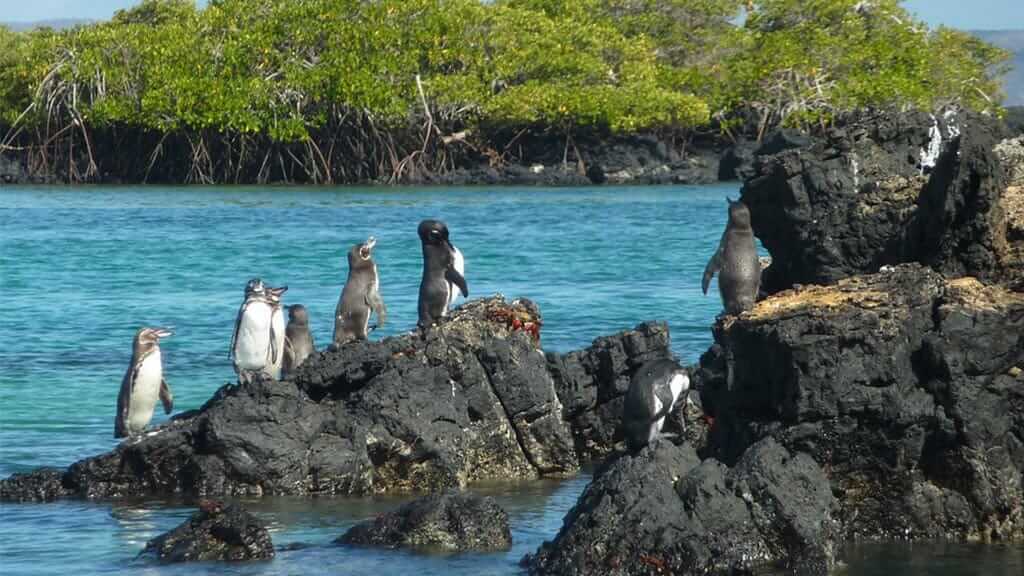
In the beginning, life on the equator was not easy for a cold-climate penguin. They had to adapt & evolve in order to survive under the hot tropical sun at the equator.
The most obvious adaptation is in physical size. They shed excess body fat that was no longer required to survive the cold Antarctic. Today, Galapagos penguins are perfectly lean and streamlined for warm weather conditions.
But even that is not enough to keep a Galapagos penguin cool on a hot day. The most important Galapagos Penguin adaptation is their method of thermo-regulation. Penguins have no sweat glands, so when they become too hot they have to change their behavior. They spend much of the day in the cool water and have also learned how to pant like dogs in order to keep cool.
FACT 9: The bird who forgot how to fly
The flightless cormorant is a quirky bird with a unique story. This fascinating species is found only in the Galapagos Islands and is the only cormorant in the world to have lost the ability to fly.
So, how did a flightless bird arrive at the Galapagos islands in the first place? Their cormorant ancestors were in fact perfectly adept at flying, so, would have arrived with ease on the wind.

If the cormorant arrived in Galapagos by flight, why can they no longer fly?
At their new home, they chose to settle on the Isabela and Fernandina islands. This was a natural choice as here the ocean is cooler and richer in nutrients. With no land predators to threaten them, and food sources found in the water, the cormorant adapted to fill his belly more easily.
Galapagos fun fact #9 is that the cormorant evolved into a powerful diver. With strong hind legs and smaller wings, they became more streamlined for deep diving. So, the act of flight soon became unnecessary, and the flightless cormorant wings are today very tiny.
Visitors therefore find a bird that is happy on land and in water, but completely unable to fly. The final irony is that evolution helped them to survive, but has ultimately left them entrapped at Isabela and Fernandina islands, unable to fly elsewhere even if they wanted to.
FACT 10: The iguana who learned how to swim
Our previous Galapagos facts already demonstrate that the islands are home to some strange creatures indeed, thanks largely to quirks of evolution. Let's now meet another - the Galapagos marine iguana - the only iguana species on the planet that has learned how to swim.
Land iguanas originally washed up on different Galapagos islands. Some island habitats were rich in cactus plants, providing delicious fruits and pads for food. Here the iguana survived and lived happily, and can be spotted by visitors today.
Other iguanas were out of luck. Washing up on barren, volcanic islands without plant life, how could they survive? The only nutritious greens to eat were seaweeds, clinging to rocks and often underwater. So, the land iguana had to learn how to swim and dive in order to eat and survive.
The land iguana thus became the marine iguana.

Various evolutionary adaptations were necessary to make this leap into the water.
Their respiratory system transformed to allow deep diving. They evolved a special blood pigment that holds more oxygen, essential for long dives. Their teeth became sharper to saw algae away from the rocks. Long claws developed to grip onto slippery rocks underwater. Tails became streamlined to steer expertly when swimming. A flatter snout gave easier access to food on the rocks. Their unique nostril glands allow them to desalinate after swimming. Their skin also turned darker for better sun heat absorption to keep them warm in the cold Galapagos waters.
All in all, quite a remarkable transformation, and another excellent example of evolution through natural selection.
FACT 11: Who has the bluest feet?
Number 11 is our last Galapagos Islands fun fact about the cool animals you can see on the islands.
The Galapagos Blue Footed booby is the undisputed comedian and clown of Galapagos. These amazing seabirds amuse and entertain visitors with their funny antics and, of course, those famous blue feet.
At Galapagos, the Blue-footed booby seems to be everywhere - you’ll see groups of boobies flying, dive-bombing, or hanging out on the rocks of most islands. With luck, you might even observe the greatest spectacle of all – the famous blue-footed booby courtship dance!
But, just what is it that makes those feet so blue? It all comes down to carotenoid pigments that they receive from their concentrated diet of sardines.
Who has the bluest feet? The most effective male hunter catches more sardines, giving him deeper blue feet, which is a symbol of good booby health. This is in fact a very important trait when attracting a suitable booby mate. Female boobies look for a male with the most impressive blue feet, which in turn increases the chances that the "very blue feet" gene will be passed down to their chicks.
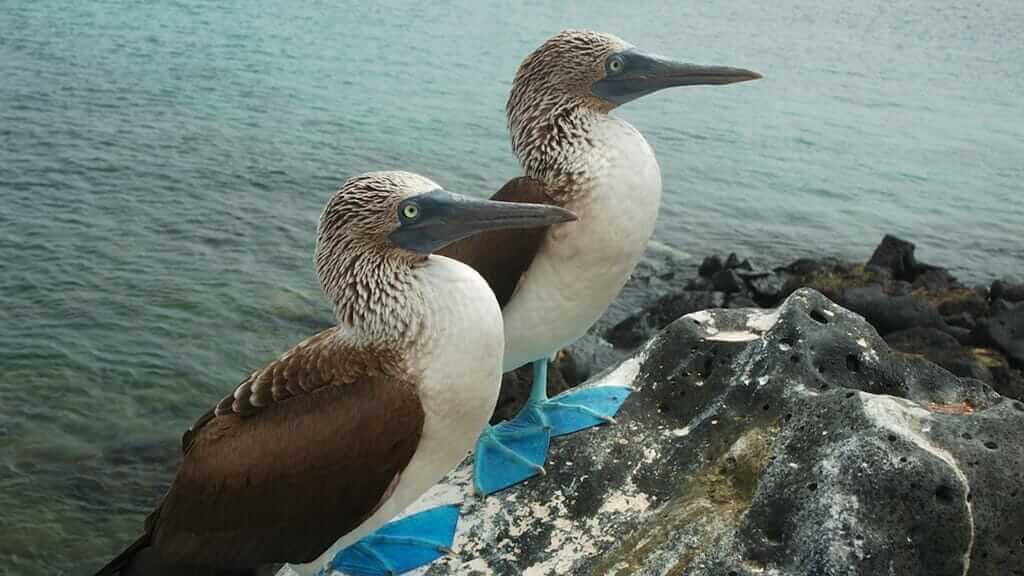
FACT 12: Galapagos has more sharks than anywhere else on the planet
Our next Galapagos Island fun fact takes us to explore the underwater world.
Studies have proven that the Galapagos Islands contain the largest shark biomass found anywhere in the Earth’s oceans. So, logically, the islands have become renowned as a world-class scuba diving destination.
Scuba enthusiasts travel from across the globe for the opportunity to dive with huge whale sharks & schools of scalloped hammerheads.
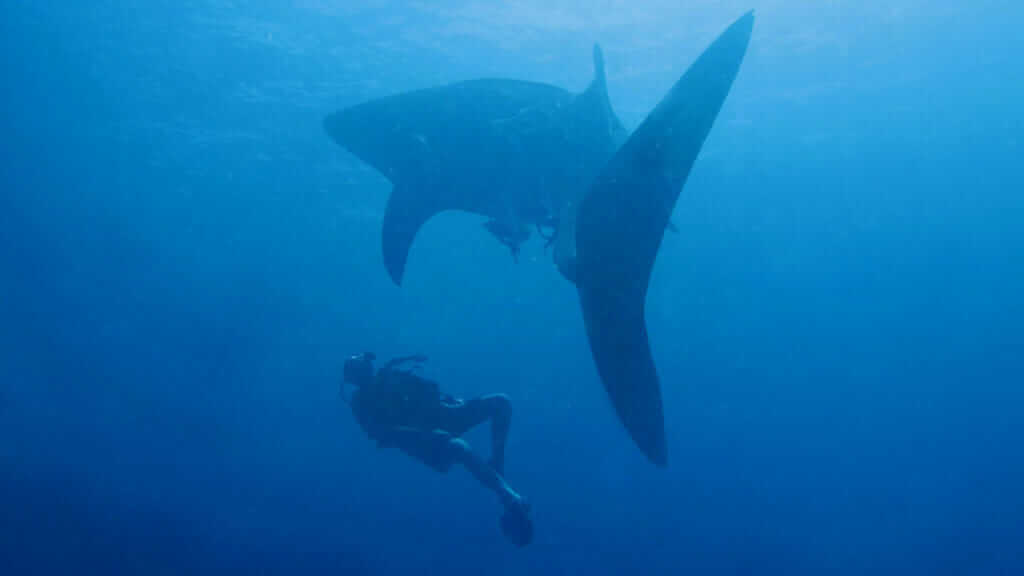
Comfortable, live-aboard dive cruises head off the beaten path to Darwin and Wolf islands, to the far northwest of the archipelago. Here, an underwater wonderland awaits. Share the depths with reef sharks (white and black tipped), rays (golden, manta, eagle), sea lions, marine iguanas, Galapagos sea turtles, as well as an exotic array of colorful Galapagos reef fish.
There are even unique marine curiosities to discover, like the Galapagos batfish. Easily identified by their bright red lips, almost as if wearing lipstick, the batfish is usually found walking around the sea floor. Their unusual pectoral and pelvic fins give the appearance of a bat.
FACT 13: Who can solve the mysterious disappearance of the Galapagos Baroness?
So, we've covered the volcanic origin of the islands, and the unbelievable story of Galapagos animals. Our next Galapagos Islands facts will cover another side of the islands - the fascinating human history of early settlers.
One of the most mysterious facts about the Galapagos islands surely relates to the Baroness and the first human settlers in the 1930s.
What started as a search for a desert island paradise on Floreana descended into hardship, conflict, and a series of strange events that would end in the enduring mystery of the Galapagos Affair.
Two German couples had led relatively simple and uncomplicated lives on Floreana, until the arrival of the baroness.
The story's central figure, the Galapagos Baroness, was certainly quite the character - openly wild and extroverted, she would greet passing ships in skimpy swimwear, together with pistol and whip. It was also considered rather scandalous at the time that she arrived with not one, but two lovers in tow. It certainly was not fitting with the more conservative lives of the other Floreana residents.

Photo taken from: line.17qq.com
On 27th March 1934, things came to a head when the Galapagos Baroness and one of her lovers suddenly and mysteriously disappeared without a trace. Bear in mind that the population of Floreana Island at this time was just 7 people, so how could 2 of them simply disappear into thin air?
At first, the other residents claimed the couple had set sail on a passing ship towards Tahiti, however, no such ship was ever recorded as having reached Galapagos shores. Later it was claimed that a long, unmistakable scream and been heard, and then silence, right before the disappearance.

photo taken from : Photo taken from: line.17qq.com
Adding to the mystery, her surviving lover soon left the island on a passing ship. Soon after his decomposed body washed up on a completely different island together with that of the ship captain.
To this day no one knows what happened to the baroness or her lover, no traces of them have ever been found or accounted for.
Did the Baroness and her lover leave of their own accord? Why did they never reach Tahiti? Could the tension with the other settlers have ended in tragic consequences? Did the Baroness' other lover have something to do with their mysterious disappearance?
FACT 14: Send a postcard from a 200-year-old whiskey barrel
Time for our final fact about the Galapagos Islands. Floreana is home to the most unique postal service on earth.
At Post Office Bay there are no employees, no stamps, and not even a physical building. All that visitors will find is an old wooden barrel and an honor system that has been respected for centuries. This is a place where old-school communication rules and age-old traditions still mean something.
The tale begins back in the 18th century. British whaling ships would spend years at sea, hunting whales for their valuable oil. It was a lonely and tough life for sure, never knowing when you might next see your loved ones back home. Of course, back in those times, there was no email, airmail, or social media. Instead, sailors devised a novel method of communication. They set up their own post office at a spot where they knew ships would frequently pass through: the Galapagos Islands.

Photo taken from: mapio
As the legend tells it, in 1793 they left a wooden whiskey barrel on Floreana Island. The system was simple: any passing sailor could leave a letter there, but he also had to check if there was any mail that he might be able to deliver himself when he returned home. For example, a sailor who was finishing his journey in London, England would take any mail with a London address. When he finally reached port he was then responsible to hand-deliver it.
Bearing in mind that whalers could spend two years or more at sea, this was a very slow mailing system – sometimes letters were delivered more than a year after writing. But it was a simple system, and it worked successfully for centuries.
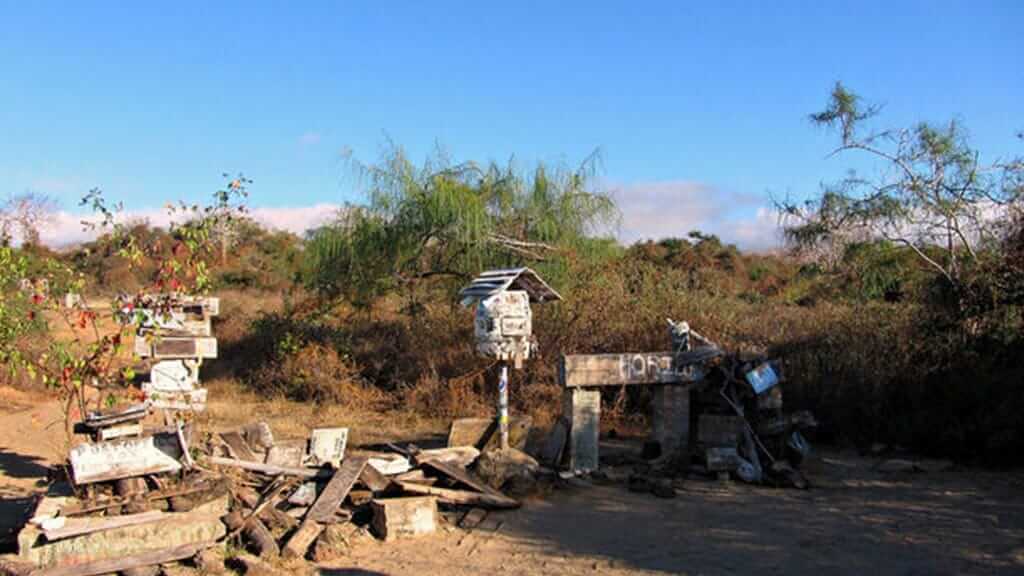
Photo taken from: atlasobscura
In many ways, this is the heart of travel at its best, strangers helping each other in the spirit of doing what they love.
Today, it's easy for visitors to join in the fun. Leave a postcard in the barrel, no stamp required, just a leap of faith that another traveler will eventually find it to hand deliver a future date.
Don't forget to rifle through the whiskey barrel yourself. If you do come across an address close to home, why not play Postman and hand deliver somebody else's postcard?
Book with The #1 Trusted
Galapagos Travel Agency
Now that we've covered our 14 fun Galapagos Islands Facts, why not plan a visit to discover the archipelago for yourself? The islands have so many more tales to tell, and curiosities to discover.
Contact us to plan a Galapagos cruise, land tour, or scuba diving experience. We’ll be happy to send you a FREE TOUR QUOTE, with all of the very best Galapagos options for your dream trip.





